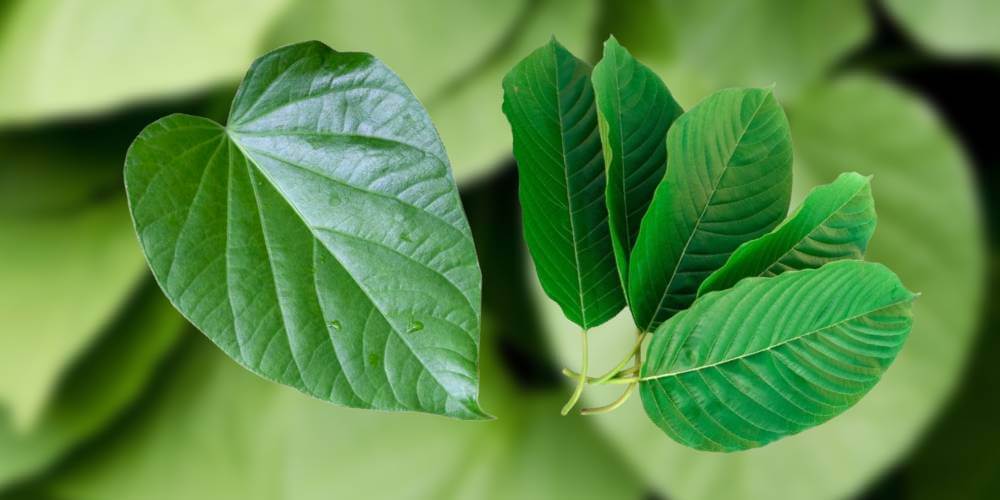Kratom, derived from the leaves of the Mitragyna speciosa tree native to Southeast Asia, has garnered increasing attention worldwide in recent years. While its potential effects and medicinal uses are subjects of debate, we're taking a different approach in this guide. Instead, we're focusing solely on the process of making Kratom tea, offering a comprehensive and detailed exploration of this soothing beverage option. By the end of this guide, you'll be equipped with the knowledge and skills to brew your perfect cup of Kratom tea, tailored to your preferences and enjoyed responsibly.
Understanding Kratom
Kratom's origins trace back centuries in Southeast Asia, where it has been an integral part of traditional cultures and practices. The Mitragyna speciosa tree, native to countries like Thailand, Indonesia, and Malaysia, produces leaves with distinct vein colors, leading to the categorization of Kratom strains. While the nuances between strains are often discussed among enthusiasts, understanding the basics is essential for selecting the right Kratom for your tea. Each strain offers its unique characteristics, ranging from soothing relaxation to energizing effects, providing a spectrum of experiences for Kratom enthusiasts.
Why Kratom Tea?
Among the various methods of consuming Kratom, tea has gained popularity for several reasons. Firstly, brewing Kratom tea offers a gentler approach compared to methods like toss and wash, which involve ingesting Kratom powder directly. Tea allows for a more gradual absorption of Kratom alkaloids, potentially leading to a smoother experience for some users. Additionally, Kratom tea can be easily flavored and customized to suit individual preferences, making it a versatile and enjoyable option for enthusiasts. Whether enjoyed hot or cold, Kratom tea offers a comforting and soothing beverage experience that can be integrated into daily routines with ease.
Choosing the Right Kratom
Selecting the right Kratom for your tea is essential to achieving a satisfying brew tailored to your preferences. When exploring different strains, consider factors such as vein color, alkaloid content, and intended effects. Red vein Kratom, for example, is often associated with relaxation and pain relief, making it a popular choice for evening blends. Green vein Kratom may offer a balance of relaxation and energy, suitable for daytime consumption. White vein Kratom tends to be more energizing, making it ideal for morning brews or productivity-enhancing blends. However, these distinctions are broad, and individual experiences may vary. Experimentation and exploration are key to finding the perfect Kratom strain for your tea.

Ingredients and Equipment
To embark on your Kratom tea-making journey, gather the necessary ingredients and equipment:
Ingredients:
- Kratom leaves or powder
- Water
- Optional: Lemon juice, honey, cinnamon, or other flavorings
Equipment:
- Pot or kettle
- Strainer or tea infuser
- Stove or heating element
- Measuring spoons or scale
Step-by-Step Guide to Making Kratom Tea
Now, let's delve into the step-by-step process of brewing Kratom tea:
-
Preparing the Kratom: Start by measuring your desired dosage of Kratom. Beginners may start with 2-3 grams of Kratom powder or 4-5 grams of crushed Kratom leaves. More experienced users may adjust their dosage based on tolerance and desired effects. Keep in mind that individual responses to Kratom can vary, so it's essential to start with a conservative dose and adjust as needed.
-
Boiling the Water: Fill a pot or kettle with the appropriate amount of water for your desired batch size. For a single cup of tea, approximately 8 ounces of water is sufficient. Bring the water to a gentle boil over medium heat. Avoid using high heat, as boiling water too vigorously can potentially degrade the alkaloids present in the Kratom.
-
Adding Kratom to the Water: Once the water reaches a gentle boil, reduce the heat to low and add your measured Kratom powder or crushed leaves to the pot. Stir the mixture gently to ensure even distribution of the Kratom particles.
-
Steeping the Kratom: Allow the Kratom mixture to simmer gently for 15-20 minutes, stirring occasionally. This simmering process allows the Kratom alkaloids to be extracted into the water, resulting in a potent and flavorful brew. Keep an eye on the mixture to prevent it from boiling too vigorously, as this can lead to a bitter taste.
-
Straining the Tea: After the steeping process is complete, remove the pot from the heat and let it cool slightly. Place a fine mesh strainer or tea infuser over your cup or teapot and carefully pour the Kratom tea through the strainer. This step helps to remove any remaining Kratom particles, resulting in a smooth and sediment-free tea.
-
Optional Flavorings: Once strained, you can customize your Kratom tea with optional flavorings to enhance the taste. Squeeze in fresh lemon juice for a citrusy zing, drizzle in honey for natural sweetness, or sprinkle in a dash of cinnamon for a warm and aromatic flavor. Get creative and experiment with different flavor combinations to find your perfect blend.
-
Serving and Enjoying: With your Kratom tea freshly brewed and flavored to your liking, it's time to sit back, relax, and enjoy the soothing experience. Pour yourself a cup of tea and savor the rich aroma and complex flavors. Whether enjoyed hot or cold, Kratom tea offers a comforting and enjoyable way to incorporate this botanical into your daily routine.

Tips and Tricks for Perfect Kratom Tea
To further enhance your Kratom tea-making skills, consider the following tips and tricks:
- Experiment with Different Strains: Explore a variety of Kratom strains to discover your favorites. Each strain offers unique effects and flavor profiles, so don't be afraid to branch out and try something new.
- Adjust Dosage and Brewing Time: Fine-tune your dosage and brewing time to achieve your desired effects. Start with a low dose and gradually increase as needed, and adjust the brewing time to control the strength of your tea.
- Enhance Flavor with Natural Ingredients: Incorporate natural flavorings like lemon juice, honey, ginger, or mint to enhance the taste of your Kratom tea. These ingredients not only add depth and complexity to the flavor but also offer additional health benefits.
- Experiment with Tea Blends: Mix Kratom with your favorite herbal teas or spices to create unique flavor combinations. Green tea, chamomile, and peppermint are popular choices that pair well with Kratom and complement its natural earthy taste.
- Stay Hydrated: Remember to drink plenty of water throughout the day, especially when consuming Kratom tea. Hydration is essential for maintaining overall health and well-being, and drinking water can help mitigate any potential side effects of Kratom consumption.
Safety Precautions and Legal Considerations
Before diving into the world of Kratom tea, it's crucial to prioritize safety and be aware of the legal considerations surrounding its use:
- Know Your Local Laws: Research the legal status of Kratom in your area before purchasing or consuming it. While Kratom is legal in many regions, there are some areas where it is restricted or banned altogether. Familiarize yourself with the laws and regulations governing Kratom in your jurisdiction to ensure compliance.
-
Start Low and Go Slow: If you're new to Kratom or trying
it for the first time, start with a low dose and gradually increase as needed. It's essential to listen to your body and pay attention to how you feel after consuming Kratom tea. Some individuals may be more sensitive to its effects than others, so erring on the side of caution is always wise.
- Consult with a Healthcare Professional: If you have any underlying health conditions or concerns about consuming Kratom, consult with a healthcare professional before using it. They can provide personalized advice based on your medical history and help ensure that Kratom is safe for you to use.
- Avoid Mixing with Alcohol or Other Substances: While Kratom is generally considered safe when used responsibly, avoid mixing it with alcohol or other substances that may potentiate its effects. Combining Kratom with other drugs or alcohol can increase the risk of adverse reactions and may be harmful to your health.
- Practice Responsible Consumption: As with any substance, responsible consumption is key to minimizing risks and maximizing benefits. Avoid excessive or frequent use of Kratom, and always use it in moderation. Listen to your body, take breaks as needed, and prioritize your overall health and well-being.
- Store Kratom Safely: Store your Kratom tea and supplies in a cool, dry place away from direct sunlight and moisture. Proper storage helps maintain the freshness and potency of your Kratom, ensuring that it remains effective and enjoyable over time.
Conclusion
In conclusion, making Kratom tea is a rewarding and enjoyable process that offers a soothing beverage option for enthusiasts seeking a gentler way to enjoy this botanical. By following the steps outlined in this guide and incorporating the tips and tricks provided, you'll be well-equipped to brew your perfect cup of Kratom tea, tailored to your preferences and enjoyed responsibly.



